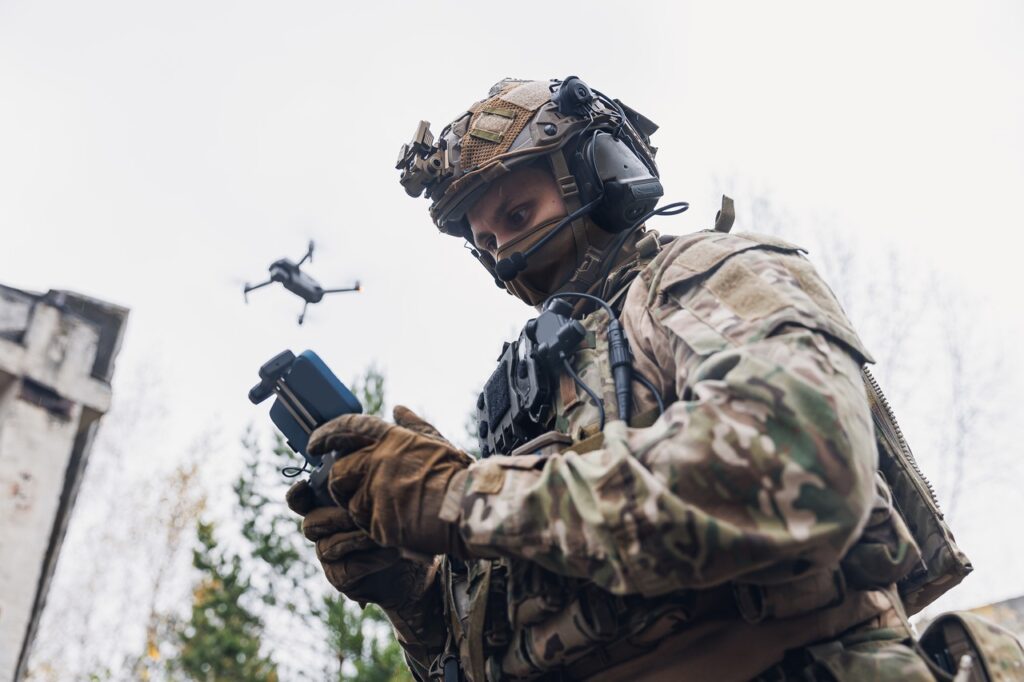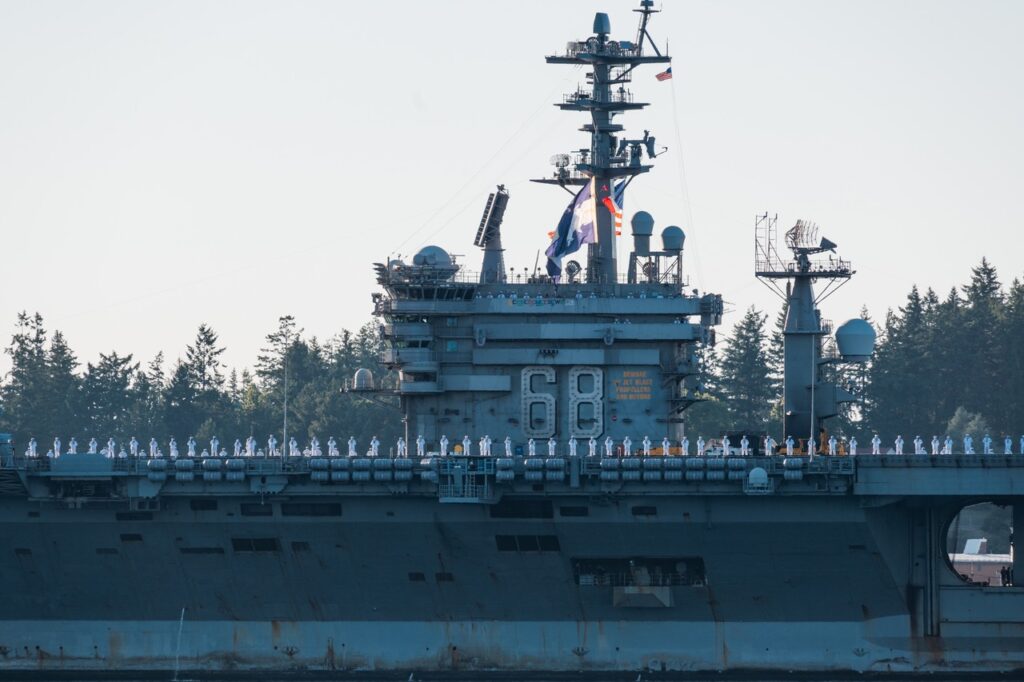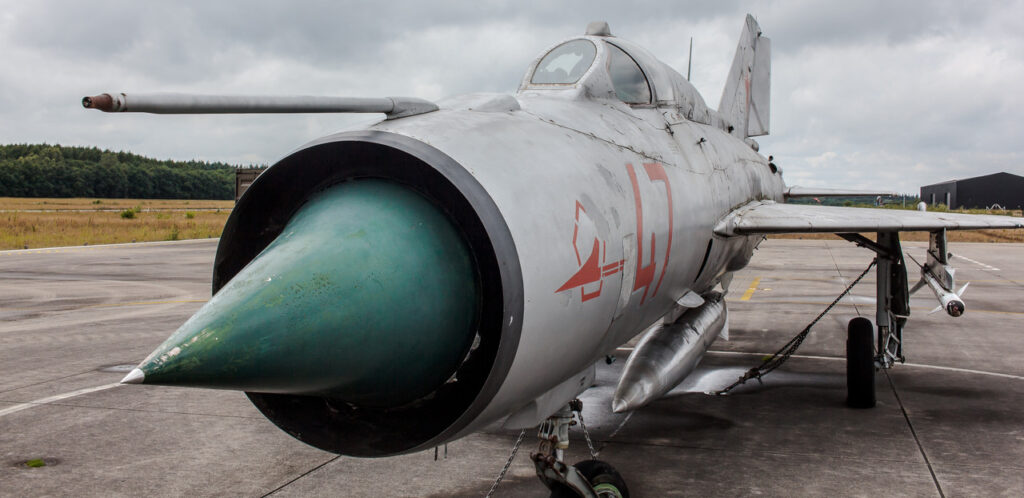
The U.S. Navy Has a Plan to Destroy Any Swarm Boat Attacks by Iran
Should swarms of armed small boats seek to surround, overwhelm and confuse large Navy ships in a coordinated barrage of attacks, surface ship radar could be jammed, long and medium range ship defenses could be rendered ineffective and virtually all angles of a ship could be hit quickly at one time.
Small boats, manned or unmanned, could launch electronic warfare attacks, hit with small arms or even fire various kinds of larger weapons. They are extremely difficult to defend for many reasons, one of them simply being numbers and redundancy; if there are so many spread out, yet fast-approaching small boats, it could be difficult for deck-mounted ship guns or overhead assets such as drones or helicopters to destroy enough approaching targets at one time.
The proliferation of longer-range mobile guns, to include possible emergence of lasers, electronic warfare or boat-launched drone attacks, all make the prospect of facing swarms of armed, fast-moving small boats even more dangerous for surface ships. Furthermore, there is no reason small manned boats could not carry and fire portable land weapons such as RPGs, Anti-Tank Guided Missiles or various kinds of medium-caliber portable guns aimed at ship structures.
Swarming small boat attacks are regarded as extremely serious combat concerns for Navy war-planners, who operate with a decided recognition that this kind of threat is quite substantial when it comes to both counterterrorism and major warfare on the open ocean. The strategy to counter small boat attacks against larger platforms is multi-faceted; multiple, fast-moving points of small missile and gunfire attack are naturally much more difficult to recognize and target.
This phenomenon can be explained in terms of what’s called “dis-aggregated” operations, if on a smaller scale than is typically thought of. Not only are a more dispersed group of small boats more difficult to target, but emerging networking technology can enable them to coordinate, share target information and stage integrated missions while farther away from one another. Navy and Marine Corps strategists, now planning for future amphibious warfare, are employing these concepts when it comes to preparing for large-scale ship-to-shore amphibious attacks. Dis-aggregated, yet closely networked attack nodes provide attacking commanders with a wider range of options and increase possibilities to defend against incoming shore attacks by avoiding a more condensed or linear ocean assault.
To counter small boat threats, the Navy has been working on specific defense scenarios wherein surface ships are attacked in exercises by swarms of armed small boats. Much of this has involved combat preparations with services’ Littoral Combat Ship — to prepare a suite of integrated weapons systems and sensors for major ocean warfare – including missiles, guns, drones and inflatable boats.
The assessments are intended to help pave the way for deployment of the Navy’s Surface Warfare Mission Package (SUW), an integrated system of weapons being prepared for combat by the Navy. SUW is engineered to destroy small craft approaching at speeds up to 35 knots or more, Navy developers say. The weapons are intended to reinforce one another and operate in a synchronized fashion.
ADVERTISEMENT
SCROLL TO CONTINUE READING
The SUW’s Missile Module is comprised of 24 ship-fired Longbow Hellfire Missiles, 30-and-57mm guns, 11-meter rigid hull inflatable boats, helicopters and vertical-take-off-and-landing ship-launched drones. Ship launched Hellfires, for instance, can utilize all-weather millimeter wave radar, inertial guidance or semi-active laser targeting to fire upon enemy ships, helicopters, fixed-wing assets or drones attacking the LCS. The concept with the overall module is to enable each platform to function as a “node” on a larger network.
Of potentially even greater concern, quite possibly, is the advent of unmanned small attack vessels unconstrained by any need to protect a manned crew. They could approach much closer, without having to avoid incoming fire from ship defense weapons. The US Navy is already testing and developing a “ghost fleet” of unmanned small ships to perform a range of missions to include, reconnaissance, mine and submarine detection and of course forward-operating attack missions – firing weapons while manned crews remain at safer distances. The US Navy, however, is of course no longer the only nation with the technological sophistication to develop and operate unmanned small boats. The current global threat circumstance is such that the US Navy recognizes it needs to know how to defend against these kinds of attacks.
Interestingly, defensive uses for swarm boats could introduce a substantial increase in ship protection; should an enemy seek to overwhelm ship defenses with a speeding swarm of small boat attacks or a barrage of incoming weapons, layered ship defenses could, at very least, be challenged, according to a 2017 article from the Journal of the Bulletin of Atomic Scientists.
The essay, titled “The Upside and Downside of Swarming Drones,” by Irving Lachow, highlights the defensive uses of swarming drone boats. “The Navy is currently doing research on using defensive swarms to halt attackers. Swarm boats may be an effective way to protect oneself from a swarm of drones: drone against drone,” the essay states.
The US Navy is beginning to arm surface drone boats with guns, rockets and mobile missiles to overwhelm enemies with swarming attacks, protect sailors at farther stand-off ranges and coordinate maritime strikes across dispersed areas of ocean.
The concept is to call upon newer levels of autonomy enabling weapons systems to search for enemies, track their movements and then target them — all while humans perform command and control as safer ranges.
The testing and demonstrations are evolving through a Cooperative Research and Development Agreement between Textron and the Navy, intended to explore, prototype and ultimately deploy the armed Unmanned Surface Vehicles.
Forward-operating armed surveillance drones, for instance, can send real-time images to helicopters and ship-based fire control radar, enabling faster response time. Armed helicopters can more quickly find and attack targets, if they are identified and transmitted from other assets such as drones, submarines or ship-based sensors. By extension, all of these systems could cue deck-mounted small arms for the closer in threats, such as 30mm and 57mm guns. Not only could the boats perform sensing and reconnaissance missions, but they could of course also themselves become explosives or seek to jam a ship’s radar by flooding it with dispersed attack nodes.
These warfare tactics, mirrored by larger platforms such as Carrier Strike Groups, are designed to create an integrated, layered defense system designed to provide defenses at different ranges and against a wide sphere of potential attack systems – to include small boat attacks.
Small, fast-transport 11-meter inflatable boats can also function in a key defensive capacity against small boat attacks. Often used as rapid entry or small attack vehicles for Navy SEALs and other Special Operations Forces, 11-meter inflatable boats can provide ship crews with an ability to leave the ship and “engage” approaching small-boat attackers, providing yet another element of defense.
Pentagon officials have long expressed concern that small boat attacks could, for instance, could be used by Iranian forces to stop the flow of naval traffic through the dangerous and narrow Strait of Hormuz – the only passage from the Persian Gulf into the open ocean.
Osborn previously served at the Pentagon as a Highly Qualified Expert with the Office of the Assistant Secretary of the Army – Acquisition, Logistics& Technology. Osborn has also worked as an anchor and on-air military specialist at national TV networks. He has appeared as a guest military expert on Fox News, MSNBC, The Military Channel and The History Channel. He also has a Masters Degree in Comparative Literature from Columbia University.
Image: Reuters.


